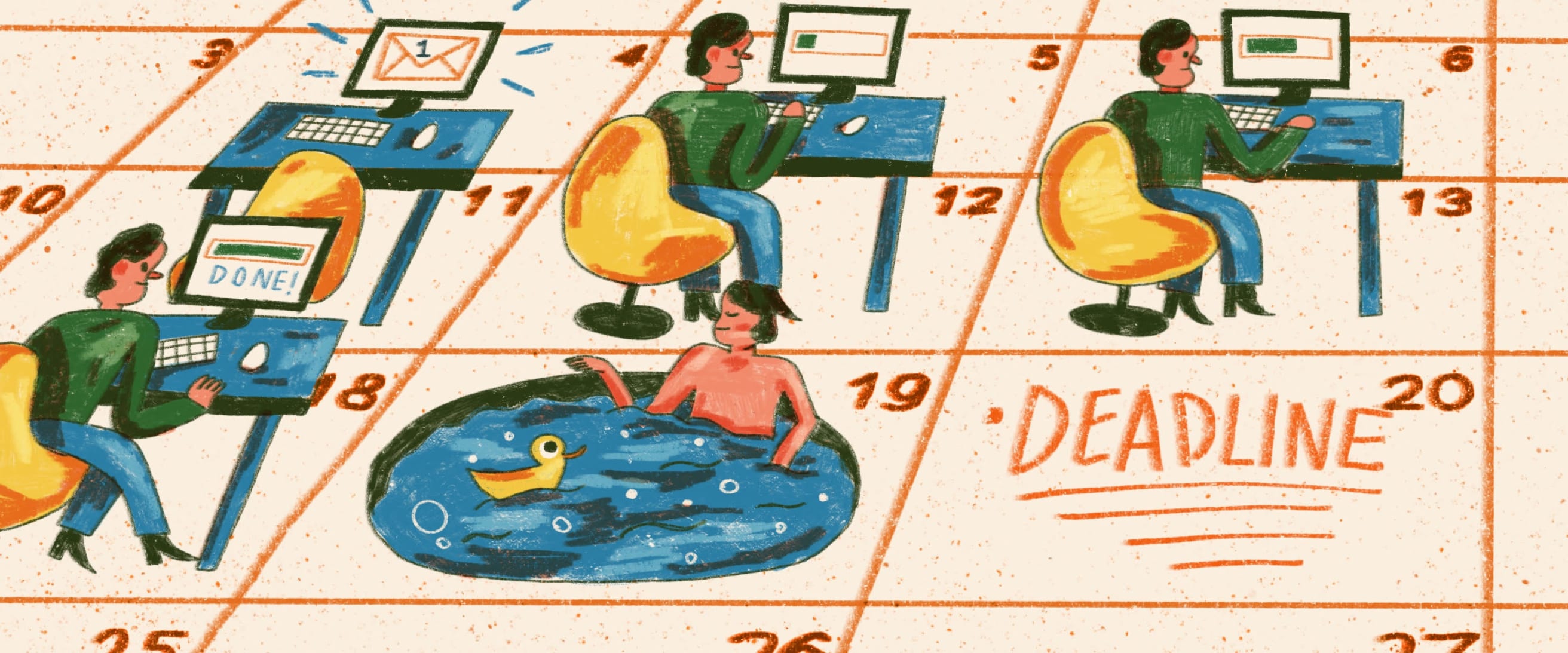One of the best lessons I ever received in work and life came from unloading mail trucks.
It was Christmas 2010. I'd been hired at the post office for the overnight shift to help handle the increasing load of holiday packages. Every night, truck after truck would arrive and park in the loading bay. As a newbie, I'd attack the interior full force as soon as the door was opened. But no matter how hard we worked, there was always more to do.

It was disheartening and exhausting. Even worse, the veterans all seemed to take their time, slowly unloading and loading trucks throughout the night.
I couldn't understand it. Until one of them came over to me in the break room:
Take your time. There will always be more work.
He was right. Yet, a few years and several career changes later, this lesson seems to have all but disappeared.
In the modern age of work — especially knowledge and remote work — there are rarely strict guidelines on what needs to be done in a day. Instead of clear deliverables, most of us face open-ended days of collaboration, communication, and context-switching.
There's always another email to answer, an idea to explore, or a meeting to attend. It's no wonder so many of us feel like we can't stop working, even on evenings and weekends. How do we know when we’ve done “enough”?
But our inability to disconnect from work isn't just tiring us out, it's having a serious impact on our happiness, productivity, and even creativity.
So how can you stop the cycle of productivity shame and learn to do "enough”?
How we got so addicted to being busy
If you own a factory or farm, you most likely define productivity as increasing your output without an associated increase in time or resources. While this might make sense when you’re stamping out widgets on a production line, it’s the wrong way to think about personal productivity in the information age. Unfortunately, many of us don’t understand that.
Instead, we focus on the quantity of work we can complete in a day rather than the quality. We obsess over inbox zero, attending every meeting, and crossing off 50 items from our to-do list every single day.
This focus on getting as much done as possible comes with a number of dangerous consequences. For one, we start to connect our value as a person with our ability to cross things off a list. This causes what psychologists call the "completion bias" — where your brain starts to favor finishing small tasks over working on larger, more complex (and usually more meaningful) ones.

Not only does this mean we’re focusing on busywork over more meaningful tasks, but as I wrote before in a post on “the busyness paradox”:
If being in demand is proof you’re doing a good job, it’s easy to mistake busyness for validation.
Maybe even worse, however, is that we blur all boundaries between work and life. All of a sudden, every minute of our day is up for grabs and should be spent productively.
As Brigid Schulte, author of Overwhelmed: Work, Love and Play When No One Has the Time, writes:
We run around putting out fires all day, racing to meetings, ploughing through emails, and getting to 5 or 6 pm with the sick realization that we haven’t even started our most important work of the day.
In the end, we’re left feeling like we’re constantly busy but have nothing to show for it. Author Jocelyn K. Glei has dubbed this situation "productivity shame":
Productivity shame is the act of setting utterly unrealistic goals or schedules for yourself and then beating yourself up when you fail to meet them.
Productivity shame stops you from ever feeling like you’ve done “enough”. It’s why you feel guilty for watching TV or even walking the dog when you could be doing something more productive. It’s a terrible feeling that gets in the way of our happiness and well-being.
5 ways to break out of the cycle of productivity shame
When you never feel like you’ve done enough in a day, it quickly turns into stress, overwhelm, and eventually, burnout. Being “productive” stops being a skill that helps you spend time on the work or projects that matter most, to an unrelenting war drum pressing you on and on and on.
Luckily, you don’t have to let productivity shame take over your life.
Here are five ways you can recognize the signs of productivity shame, start to set better, more realistic expectations for yourself each day, and actually get more of the important stuff done.
1. Change the way you think about productivity
At the core of productivity shame is simply thinking the wrong way about productivity.
When you treat your workday like a factory pumping out products, it’s easy to think you’re being productive when you’re really just answering a million redundant emails. Yet that’s how most of us spend our days.
When we analyzed data from 50,000+ RescueTime users, we found that knowledge workers check their email or chat app every 6 minutes or less on average. And a new study published in Human-Computer Interaction found that people switch apps and activities every 20 seconds on average and rarely spend more than 20 minutes uninterrupted on any one activity.
Constant context switching like this has a huge impact on your ability to focus and get things done. So why do we keep doing it? The problem is, we’ve trained ourselves to celebrate this type of work. Being busy — no matter what you’re doing — means you’re valued and needed.
As Brigid Schulte writes in Harvard Business Review:
Unlike a century ago, when Americans showed their status in leisure time, busyness has become the new badge of honor.
Getting rid of productivity shame starts with changing your understanding of what it means to be productive. Instead of simply being busy, you need to think of productivity as being busy doing the right things.
As Atomic Habits author, James Clear, explains:
We often assume that productivity means getting more things done each day. Wrong. Productivity is getting important things done consistently.
Clear hits on another important point here. Changing how you think about productivity means being decisive and confident with how you’re spending your time. Consequently, this shift in thinking has a huge impact on your ability to focus on what matters. In his book, The Rise of Superman, author Steven Kotler found that top executives are 500% more productive when in a state of deep focus—or flow—than when they’re distracted, scattered, or unfocused.
Britany Berger, The Founder of WorkBrighter.co and a Content Marketing Consultant, makes space in her day to assess what productivity looks like for her and what pushes her business forward:
"When you're trying to do all the productivity hacks at the same time and too caught up in the hustle mindset, it's so easy to lose sight of what actually makes a difference. To help me wade through the confusion and overwhelm, I try to really study myself and the effects of working different ways. For example, I love tracking my energy, productivity, and mood - the Work Brighter trifecta - throughout the day. Not only does it let me clearly see what works and what doesn't, but doing it forces me to slow down and take breaks between tasks to journal this info. You're working a little slower, but more intentionally, and it more than evens out."
Whenever you start to feel the pull of busyness, take a step back and ask yourself: Is this the right thing to be working on?
2. Take advantage of the progress principle
Another main reason you never feel like you’ve done “enough” is that you don’t see enough progress each day.
The human brain is hardwired to want to finish tasks (remember the completion bias we spoke about before?). If you’re always chasing massive goals, you’re going to constantly feel like you’re missing the mark.
It’s not just massive goals that are setting you back, however. We’re also notoriously bad at estimating how long tasks will take to complete, thanks to another cognitive bias called the planning fallacy.
Ask yourself how much time you have each week to work. Forty hours? Fifty hours? Sixty? More?
According to our analysis of over 225 million hours of working time, the number is closer to 12.5 hours of truly productive time a week. If you plan your week based on 50 hours of productive time and end up with barely a fifth of that, it’s no wonder you’re feeling productivity shame.
The answer, however, isn’t to stop setting big, audacious goals. Instead, you need to break those goals up into manageable chunks. This does a number of things.
For one, it allows you to take advantage of the completion bias, but this time you’re ticking meaningful tasks off your list (not just what feels urgent, like emails and chat). But more importantly, finishing small pieces of work builds momentum and meaning into your workday.
As Harvard professor Teresa Amabile writes:
Of all the things that can boost emotions, motivation, and perceptions during a workday, the single most important is making progress in meaningful work.
Amabile and her colleagues call this "the progress principle." In short, we feel more motivated and satisfied when we can look back on the day and see progress towards our most meaningful work. Not just that, but tracking progress on your goals can help you better estimate how long tasks typically take to do. This way, your expectations aren’t way off and you won’t fall victim to the planning fallacy in the future.
3. Use your tools to set up support systems
Too many of us set large goals and then expect our initial excitement and commitment to carry us across the finish line. However, this rarely happens. Motivation has a funny way of disappearing when we need it most. This lack of control over our own motivation and excitement is another source of productivity shame.
As Glei explains on her podcast, productivity shame happens when you set an incredibly difficult goal for yourself without setting up any systems of support (and then blame your failure on a lack of personal willpower and motivation).
The paradox of motivation is that we often feel like we need to get motivated before we can start working on a project. However, motivation actually only appears after we’ve begun.
Psychologists call this "the motivation trap":
Motivation does not precede action, action precedes motivation.
So how do you get started when you don't feel motivated to work towards your large goal?
The key is to use moments of motivation to create systems and set up tools that will support you even when you don’t “feel like it.” BJ Fogg, the founder and director of the Stanford Behavior Design Lab, calls this the motivation wave. In other words, ride the high of starting a project to set yourself up for success in the long-term.
What sort of systems and tools can you use to do this? Here are a few you should consider.
A time tracker like RescueTime
Time is your most valuable resource. The more efficient you are at using the time you have, the more accomplished you’ll feel at the end of each day. Yet most people have no idea where their time is going. When we interviewed 500+ workers about how they feel each day, 90% said they don’t feel in control of their time.
A time tracking and productivity tool like RescueTime makes you hyper-aware of how you’re spending your time so you can take back control of it and spend it on the right tasks.
RescueTime works invisibly in the background to observe the apps and sites you use during the day and then categorizes them and assigns them a productivity level (which you can customize).
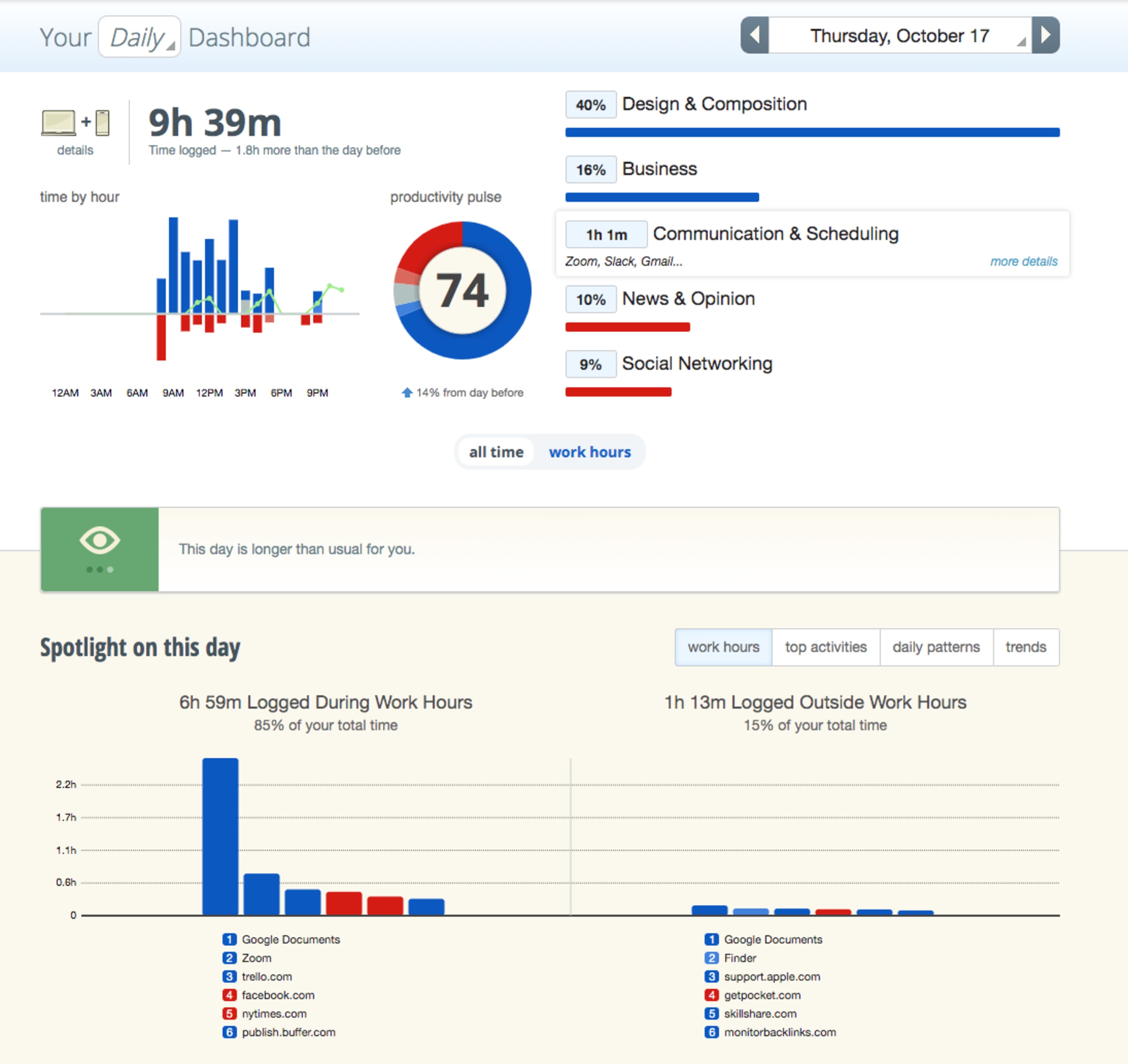
At any time of the day, you can check your RescueTime dashboard to see how productive you’re being and whether or not you’re getting sucked into busy work. You can also look at weekly, monthly, or even yearly reports to uncover long-term trends and bad workplace habits.
For example, award-winning cartoonist Colleen Doran uses RescueTime to help her find more time for her art (instead of busywork). Just the act of tracking her time allowed her to see how much of her day was being eaten up by non-art activities and adjust:
Before using RescueTime, I was very bad about tracking how much of my time was going into my art. I’d sink way too much time into admin tasks and have no energy left for writing and drawing! I was puttering, doing busywork, but the real work is art, and that has to come first.
RescueTime can also help you take full advantage of the progress principle by setting goals and getting real-time alerts throughout the day. For example, I have a Goal set to let me know when I’ve hit 3 hours of writing in the day.
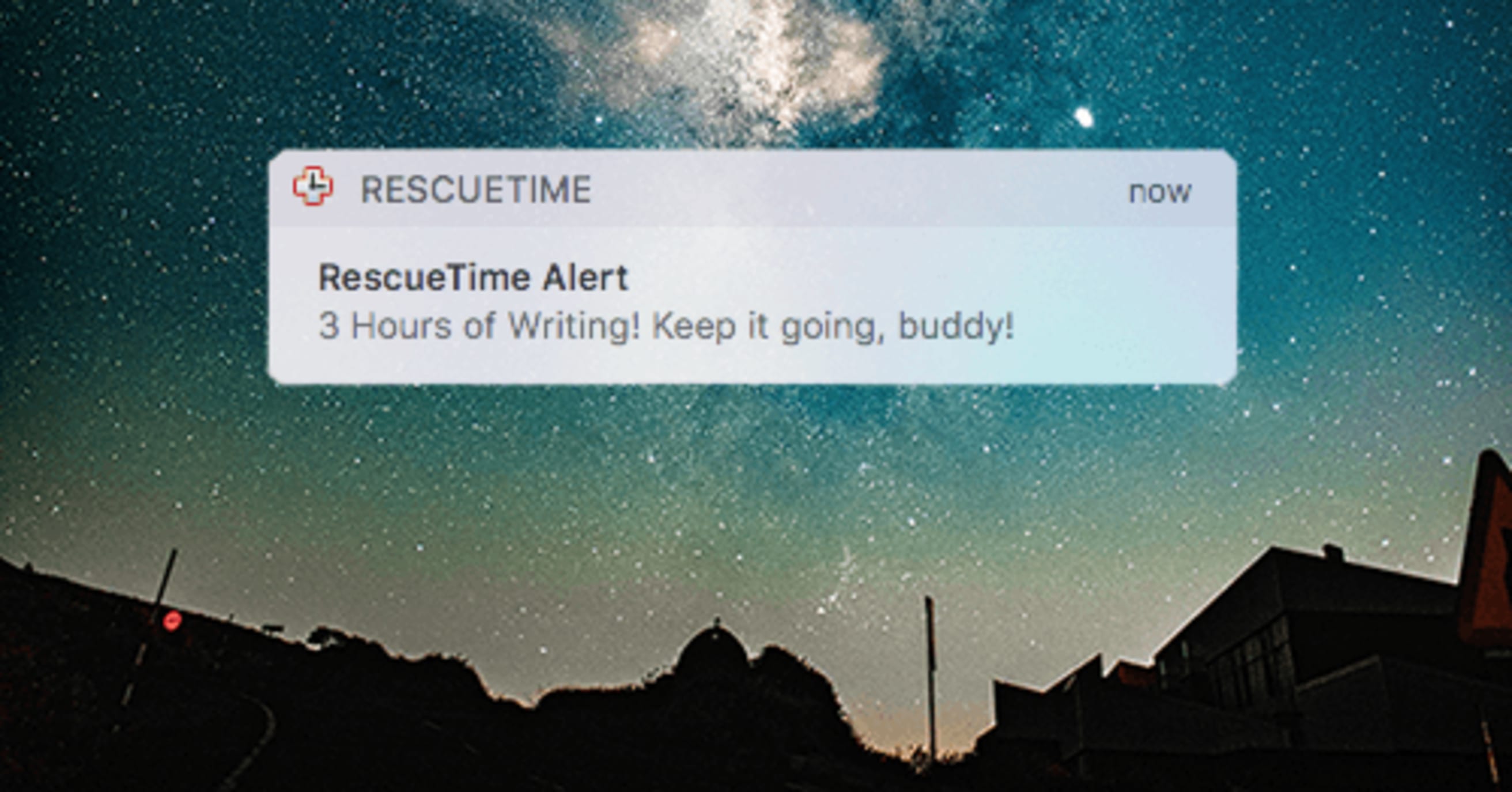
Setting up RescueTime Alerts and Goals makes you accountable to how you spend your time each day. This way, you’re not left guessing whether you’ve spent enough time on the tasks that matter and make you feel productive.
A digital to-do list like Todoist
While RescueTime tracks exactly how you spend your time across apps, websites, and activities, Todoist tracks the exact tasks you’re working on as well as larger goals, progress, and overall productivity.
If you think back to James Clear’s definition of productivity as getting important things done consistently, Todoist is what helps you prioritize tasks, set deadlines and make sure that you’re focusing your energy on the right things.
For example, you could use Todoist to organize your task list for a creative project like writing a book. Rather than getting overwhelmed by all of the individual steps you need to take, you can add them to a Todoist list, assign deadlines or recurring due dates, as well as a priority level so you know what needs to be worked on now.
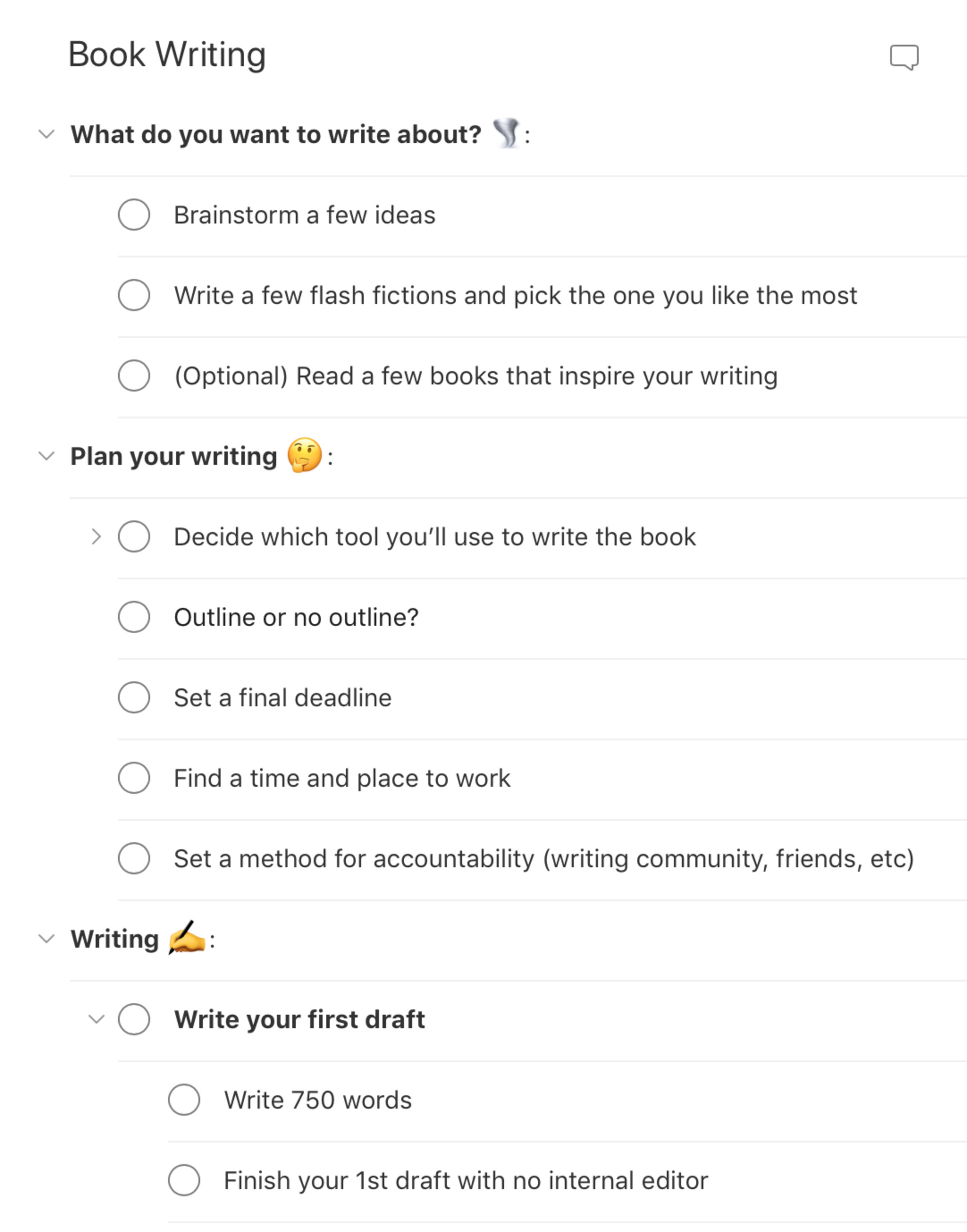
You can also use the review section to see visualizations of your progress and how productive you’ve been over time.
A system like GTD
Lastly, a productivity system like David Allen’s Getting Things Done (GTD) can help you stay organized and force you to regularly reflect on the work you’re doing and decide if it’s worth your efforts.
GTD is a system for capturing all the work you need to do in one place so you can organize and choose what needs your attention. It’s not simply a way to handle your to-do list, but a high-level way to deal with all the tasks, projects, ideas, and responsibilities that are pulling at your attention and causing you to waste time on busywork.
In a nutshell, GTD involves a 5-step process:
- Capture: Use any tool you like (such as Todoist) to create a central repository of all your to-dos, ideas, emails, projects, and anything else that needs your attention. The key here is to use a tool that is easy to use, and add items throughout the day.
- Clarify: Break down each item on your list into the easiest next step. For example, instead of “write blog post,” you would break that task down into “write outline for blog post.” If any of these tasks can be done in 2 minutes or less, do them now or delegate them.
- Organize: Each actionable item now needs a due date (where applicable), priority rating, and category, such as:
- Reflect: Set aside a regular time to go through your action list and clean it up (weekly is fine).
- Engage: Get to work! Choose the next item from your action list, and work through it.
At this point, any new task or idea that comes your way is instantly put through this filter and added to the appropriate list. It may seem like a lot of work, but using the motivation wave to set up GTD frees your mind to focus on meaningful work rather than busy tasks.
4. Learn to disconnect at the end of the workday
Outside of your day-to-day tasks, you might feel productivity shame because you can’t separate your work life from the rest of your life.
With smartphones, remote work, and other changes to the workplace, we’ve allowed our work to follow us home (and everywhere else in our lives). However, when you can’t disconnect from your work, you’ll always feel like there’s more to be done.
Psychologists have spent years studying how people disconnect from work and have discovered four elements that you need to include in your end-of-day routine:
- Detachment: Physically separate yourself from your work tools and environment.
- Relaxation: Spend time alone with your thoughts to process the day.
- Mastery: Work on a hobby or interest that engages you.
- Control: Create a “shutdown ritual” that you follow each evening.
By focusing on these actions instead of work, you give your mind and body a chance to rest instead of feeling like there’s always something more you could do.
5. Set aside time to understand what “enough” really means
Finally, one of the easiest ways to fall into productivity shame is that you simply don’t know what “enough” is from the start.
This isn’t as simple a question as it might seem at first. We all want to excel at work and so instead of setting small goals, we push ourselves to over-perform. Unfortunately, we rarely live up to our own expectations.
It’s a delicate balance finding the sweet spot of “enough.” However, one of the best examples of this is OKRs at Google.
OKR (which stands for Objective and Key Results) is a goal-setting framework that combines what you’re working towards with how you’ll measure success. The beauty of this system is that it allows you to set a “threshold of success” rather than make goals an all-or-nothing situation.
For example, at Google, all their objectives are goals that no one should realistically be able to hit. Instead, they set their “success threshold” at 60-70%, which is enough to challenge and motivate you, without feeling like you’re constantly failing.
Find your own sweet spot. What’s the honest threshold where you’ll feel good about the day but also be challenged to push yourself?
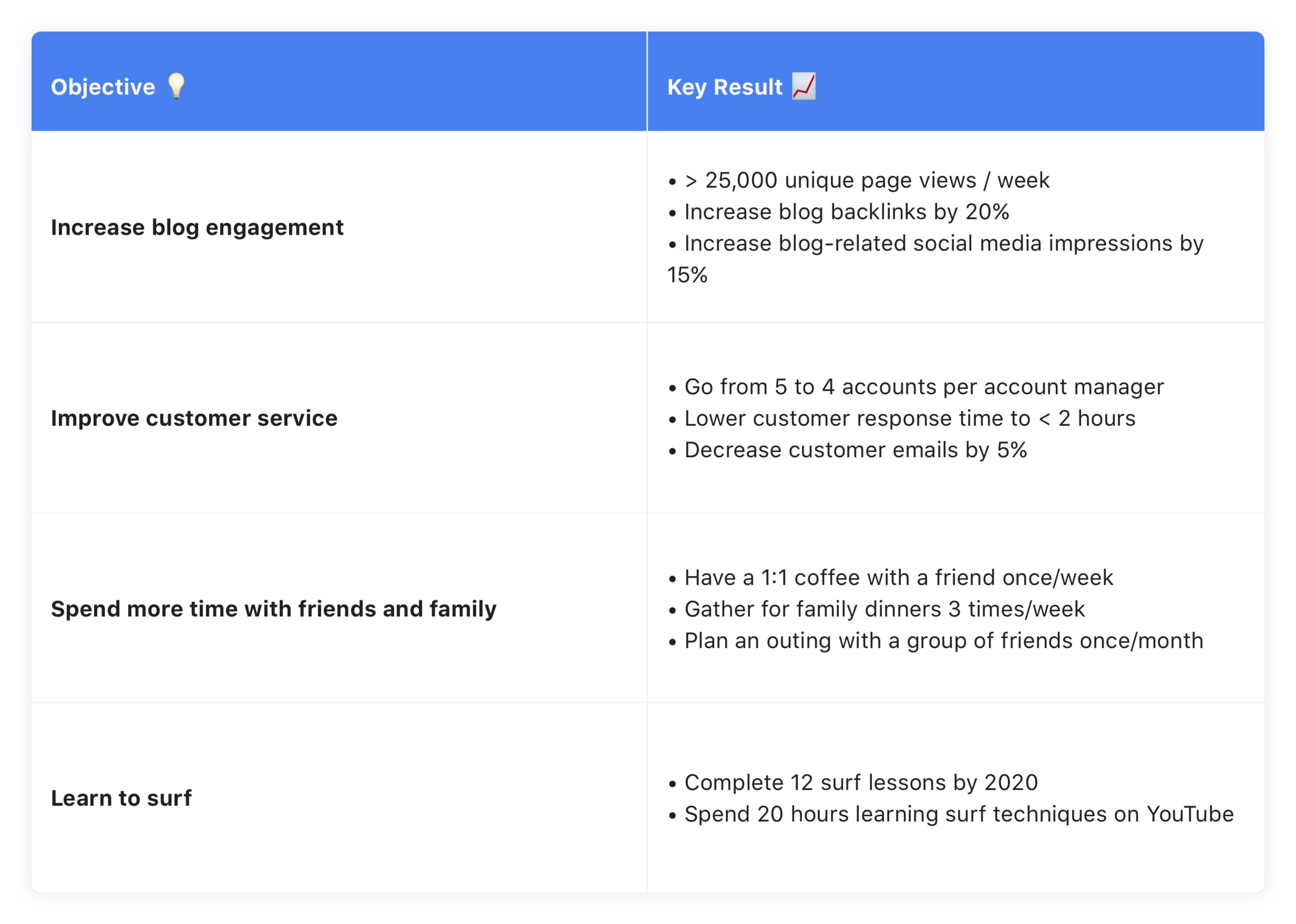
Shame isn’t the motivator we think it is
In the end, I didn’t last long at the post office. In fact, the whole facility was shut down shortly after due to a union dispute. But that doesn’t mean the lesson was any less impactful. If anything, switching to an office setting has made it even clearer how important it is to define “enough.”
You can finish unloading a truck, but there will always be another email to send, meeting to attend, call to make, or document to write. The mail (both physical and electronic) will always keep coming in. It’s up to you to decide when you’ve done enough for the day and can walk away feeling happy, satisfied, and motivated to dive back in tomorrow.
